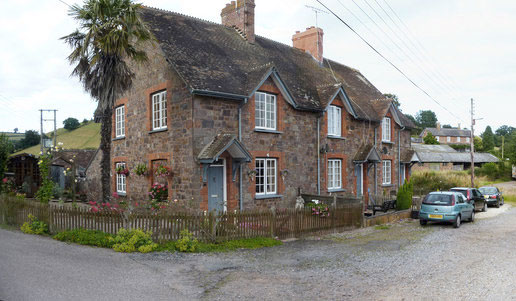
High levels of second home ownership, low wages and high prices are causing a 'rural housing crisis,' according to a new report.
Rural areas face profound affordability issues with house price growth exceeding increases in local incomes. In 90% of rural local authorities the average home costs over eight times the average salary. The report, 'Rural Housing: Countryside in Crisis', asked the question: "How do we ensure our countryside does not become the preserve of only the very wealthy?"
The Country Land and Business Association backed the National Housing Federation's report but urged for updates to the planning system to be given more time to take effect.
The organisation said the NHF report must allow more time for updates to the National Planning Policy Framework (NPPF) and National Planning Practice Guidance (NPPG) to deliver more affordable housing.
CLA President Henry Robinson said: “Updates to the planning system now provide a framework to allow critically-needed affordable housing to be built in the countryside.
“Planning authorities with local plans that fail to reflect these guidelines, or with a protectionist outlook, prevent landowners in a position to provide affordable homes from doing so.
“Even in instances where local authorities are open to change, there is still a time lag where planning applications are concerned. The new planning system must be given time to take effect in rural areas before the results can be quantified.”.
The organisation said that a reduction in government grants for housing means the private sector offers the best opportunity to address years of underwhelming housing provision.
Mr Robinson added: “Local Authorities must embrace private landowners’ enthusiasm for providing housing instead of hiding behind traditional methods when a real change is needed.
“In many villages development has been restricted for decades, limiting the ability for communities to grow organically.
“We would caution against pursuing the compulsory purchase of sites as faster, more cost effective solutions can be gained through agreements with landowners.”
DEFRA reports that the average price of homes in rural hamlets - where there is the largest difference - is almost £119,00 higher than in urban areas.
The areas with the biggest affordability issues are in the South West. In the South East, it is the rural areas with excellent transport links to London.
Around half (44%) of the 50 most unaffordable places to live in England outside of London are in rural areas. House prices in these areas are between 13 and 20 times the average salary.
Dubbed as POREs (Priced out of Rural England), workers in rural areas have actually seen wages rise at a slower rate than the rest of England in the last decade, by 21% compared to 24% in the rest of the country (2).
Adding to housing woes in rural locations, a shortage of the right kind of properties is pushing up prices. Increasingly, families are feeling forced out of their local areas as more buyers seek second homes in desirable countryside areas which are often left empty outside the tourist season putting pressure on local economies. In some areas like South Hams in Devon, as many as one in ten properties is a second home (3). Of the 25 local authorities with the highest proportion of second homes, nearly two thirds are rural.
Whilst the unaffordability crisis in rural areas is forcing young workers and families out, the number of over 65s has risen 2.5 times faster (by 20%) (4) than in towns and cities. Recent figures project that by 2020 around 65% of over 65s (an increase of 24%) in many rural areas will need help with simple domestic tasks (5) like shopping, washing dishes and opening screw tops. The National Housing Federation is warning that rural areas will struggle to support the aging population boom unless more affordable homes are built ensuring families and working people can keep communities alive.
David Orr, National Housing Federation chief executive, said: “The traditional picture of the English countryside is fast becoming extinct. We know how difficult many under 40s are finding it to afford a home in towns and cities, but it’s becoming impossible for people to put down roots in our villages and market towns.
“The unaffordability crisis in rural areas is putting local shops pubs and schools at risk of closure and ageing populations are putting pressure on communities.
“These worsening problems would be solved if more affordable homes were built. We are not talking about concreting over the countryside. It’s not ruining the countryside to build 10 high quality, affordable new homes in our villages and 50 in market towns. That’s all it would take across the land to end the rural housing crisis and help to solve the country’s housing crisis within a generation.”
